#Organic Tea
Text
What do you think envy tastes like?
(Yes, this is for a tea.)
8 notes
·
View notes
Text

I just got this on sale for 3 euros :o 3 euros for 25 organic teas and 13 different flavors I am SHOOK Just had one it was delicious
3 notes
·
View notes
Text
Chinese medicine says tea, are you drinking it right?

Today, I shared an article from the overseas edition of People's Daily, which featured a personal experience of drinking tea by Dr. Zhang Dong, the Chief Physician of the Cardiology Department at Xiyuan Hospital, China Academy of Chinese Medical Sciences. After reading Dr. Zhang's experience, it may challenge some of our perceptions about tea drinking. In popular belief, it has always been considered improper to drink tea on an empty stomach as it can cause discomfort, especially when drinking green tea. However, it seems that the reality is not entirely as we thought.
Taking this opportunity, I would like to share my personal experience with tea drinking. I have been a tea enthusiast for over 30 years and I have some digestive issues, including gastric ulcers and excessive stomach acid. Nevertheless, I can be called a 'tea addict.' I don't smoke or drink alcohol, but I am addicted to tea. I am the kind of person who would rather give up meat than give up tea. I remember starting to enjoy tea when I was in my teens, and my favorite is green tea. I love green tea because it is mainly produced in my hometown, which is located in the core area of China's green tea production known as the 'Golden Triangle.' The ecological environment there is exceptionally good, free from industrial pollution. Therefore, the quality of green tea is very high. Almost every household cultivates tea, which is why I have a special fondness for green tea and its refreshing aroma and taste.
I have a daily ritual of 'three brews' when it comes to drinking tea. By 'three brews,' I don't simply mean changing the water three times. The concept of 'three brews' refers to the following routine: after breakfast, I must brew a cup (or a pot) of tea. I drink the tea before starting work or while working. The second brew is in the afternoon. If I take a nap, I discard the tea leaves from the morning brew and brew a fresh cup with new tea leaves. The third brew is in the evening. I have a habit of taking a walk after dinner, usually in the park for about an hour. When I return home, I brew another cup of tea and savor it slowly. This has been my tea-drinking habit for over 30 years.
I prefer strong-tasting tea, so the tea I drink is usually concentrated. It has been like this all along. If it's too weak, I feel it lacks flavor. Also, the water temperature for brewing tea must be above 90 degrees Celsius because if the water temperature is too low, the fragrance and flavor of the tea won't be fully released. Therefore, I don't like brewing tea with low-temperature water.
In the blink of an eye, it has been over 30 years of drinking tea. I can't claim that tea is a miraculous cure-all, but I rarely get sick, not to mention serious illnesses. Even common colds are rare for me. It has been like this for decades. I haven't even used my health insurance card once. I found that my immune system is robust. Even during the COVID-19 pandemic in 2020, I didn't get infected, not even once. Isn't that surprising? I wonder if my strong immune system has anything to do with my regular tea drinking. Of course, apart from drinking tea, maintaining good lifestyle habits is also crucial.
Drinking tea does have benefits for the body, especially green tea. However, it's important to remember not to treat tea as a miraculous cure-all. We should approach it with the mindset expressed in the ancient Chinese book 'Huangdi Neijing': 'Treat before illness manifests, and regulate before disorder occurs.' Because drinking tea not only promotes health but also nurtures the mind.

The following is a forwarded article:
When I was young, I only knew of two types of tea: 'big bowl tea' and 'Biluochun' (a type of green tea). It was later, when I studied traditional Chinese medicine, that I discovered tea is also a medicinal herb. For example, Chuanxiong Tea is mentioned in the book 'Compendium of Materia Medica': 'Tea leaves have a bitter and sweet taste. They enter the Hand and Foot Shaoyin, Taiyin, and Jueyin meridians. Its function is to clear the heart and lungs, cleanse the intestines and stomach. When combined with chrysanthemum, it treats headaches; when combined with ginger, it relieves water retention and can be consumed after drinking alcohol, entering the Bladder and Kidney meridians.' However, tea is inherently cool in nature, and I have a weak and cold spleen and stomach constitution. I remember one time when I drank Pu'er tea, I had to rush to the restroom halfway through. After that, I rarely drank tea. But one chance encounter changed my perspective.
Not long ago, I was strolling around the Wudaoying Hutong near the Yonghe Temple in Beijing when I came across a small shop. The owner of the shop was a good friend of mine who invited me to try Biluochun tea. It is a type of green tea. It was dinner time, and I hesitated to drink green tea on an empty stomach. So I politely declined. But my friend said, 'Give it a try, I guarantee it won't be cooling to your body.' She explained that this tea came from an 80-year-old tea tree growing on a sunny slope in the mountains near Dongting Lake. It was the first harvest of Mingqian tea, hand-picked and processed using firewood, making it different from other green teas. Unable to resist her persuasion, I sat down and tasted this Biluochun tea. After a few cups, to my surprise, my stomach and intestines felt slightly warm and comfortable, with no signs of diarrhea. I let out a few belches and felt quite at ease, and surprisingly, I felt a sense of fullness. I stayed until 8:00 PM, drinking tea on an empty stomach without any discomfort. I even felt a slight sense of fullness and didn't feel hungry. The warm tea entered my stomach, and I started to sweat slightly, feeling incredibly comfortable. Later, my friend gave me some Biluochun tea to take home, and every time I drank it, I had the same experience. It seemed far from being a mere coincidence.
This chance encounter changed my perception of tea, especially green tea, and reminded me of an elder who once said that his father, in his nineties, had been drinking tea his whole life and lived a long and healthy life. Now I realize it's not just due to constitution. Recently, I have been pondering on this and suddenly had a realization.
Although the nature of tea is generally considered cool, whether it ultimately exhibits a cold or warm property depends largely on two factors. Firstly, the growing environment plays a role, whether it is in a predominantly yin, cold, and damp location or a warm and sunny one. Just like grapes in the north differ from those in Xinjiang, Chinese medicinal herbs such as Achyranthes bidentata, known as niuxi, have different properties in Sichuan, where it promotes blood circulation, compared to Huai niuxi in Henan, which tonifies the liver and kidneys. Another example is ginseng, with ginseng from the northeast having a warm nature, while Western ginseng tends to be cooler. These differences are primarily attributed to variations in the places of origin, which encompass factors such as temperature, sunlight, soil, and cultivation methods.
Secondly, the processing method of tea plays an equally important role. Most teas undergo a process called "kill-green," which involves using heat for fixation. Traditional Chinese medicine recognizes that the heating process can alter the cooling or warming properties of medicinal herbs. For instance, raw licorice has a cool and clearing nature, while roasted licorice has a spleen-tonifying and qi-supplementing effect. Raw Rehmannia has a cool nature that cools the blood and promotes blood circulation, while steamed Rehmannia has a slightly warm nature and tonifies the kidneys. Most herbs that undergo heating processes tend to acquire some warm properties, although the specific methods of heating, including the use of firewood or an oven, can also make a difference.
Tea processing involves various steps, many of which involve heat treatment, such as roasting or steaming. These processing techniques determine the coolness or warmth of the tea. I used to believe that fermented teas like black tea or Pu'er tea were not cooling because I didn't understand the fermentation process. Fermentation in tea production often involves spreading the tea leaves and allowing them to ferment at around 25 degrees Celsius, which is different from the heating process. Therefore, in conclusion, the coolness or warmth of tea depends on the environment and processing techniques.
From this perspective, individuals with a cold constitution can still drink green tea, while some fermented teas, such as Pu'er tea, may not be suitable. It is important to find the tea that suits oneself and understand the principle of moderation in order to find the path to health preservation. (Dr. Zhang Dong, Chief Physician of the Cardiovascular Department at Xiyuan Hospital, China Academy of Chinese Medical Sciences)
Article Source: People's Daily Overseas Edition via People's Daily Online
#tea#green tea#chinese tea#qiandao silver needle tea#spring tea#organic tea#tea polyphenols#white tea#black tea#caffeine#Bowl tea#Fermented tea#Black tea#iced tea#matcha#cardamom#hot chocolate#herbal tea#Dark tea#Biluochun tea#Traditional Chinese medicine#Tea leaves#Bitter and sweet#a warm embrace#zhongli my beloved#xiao my beloved#diluc my beloved#genshin impact zhongli#Clear the heart and lungs#Cleanse the intestines and stomach
4 notes
·
View notes
Text
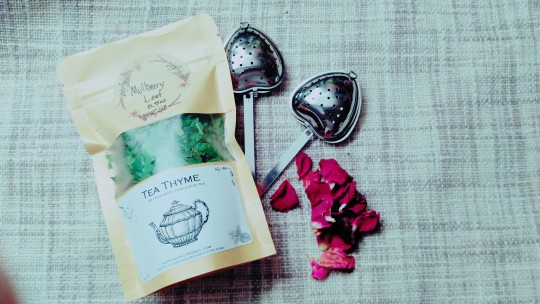
Shop our new teas (More soon!)
#tea#teas#herbal teas#herbals#herbal#herbal remedy#herbal medicine#medicine#organic#organic tea#herbal tea#wildflower tea#organic medicine#natural medicine
3 notes
·
View notes
Text
Sweet Potato Curry Recipe
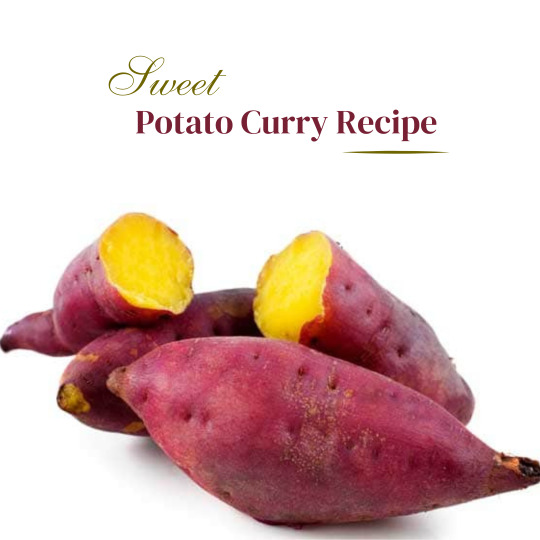
Introduction:
Delve into the realm of tantalizing flavors with our Sweet Potato Curry Recipe, where organic herbs and spices come together to create a symphony of taste. Brace yourself for a culinary journey that promises both comfort and gastronomic delight.
Ingredients Required:
2 medium-sized sweet potatoes, peeled and chopped
4 handfuls of chopped baby spinach
1 teaspoon whole mustard seeds
2 teaspoons whole cumin seeds
1 ½ teaspoons turmeric powder
1–2 teaspoons salt (as required)
1 tablespoon sunflower oil
4 ½ teaspoons coriander powder & cumin powder (1:1 mix with ¼ cup water)
Chopped cilantro for garnish
Red chili powder (optional)
Process:
Heat the oil in a large pan over medium heat.
Add mustard and cumin seeds, allowing them to crackle.
Incorporate sweet potatoes, ensuring they are coated with oil and seeds.
Sprinkle turmeric powder and salt, stirring well.
Add water, cover the pan, and let it steam for 7–10 minutes.
Stir occasionally, checking potato tenderness.
Introduce spinach, allowing it to wilt.
Sprinkle the cumin-coriander mix generously.
Turn off the heat, cover, and let flavors meld for 4 minutes.
Garnish with fresh cilantro and serve with rice or bread.
Conclusion:
Bid farewell to mundane meals and embrace the warmth of homemade sweet potato curry infused with the essence of organic herbs and spices. Let each spoonful transport you to a realm where comfort and nourishment intertwine. Whether you're a novice or a seasoned chef, this dish epitomizes the joy of simple, hearty cooking. So, gather your ingredients, infuse your kitchen with aromatic bliss, and savor the lingering taste of culinary magic.
1 note
·
View note
Link
I was very honoured to sit down with the very talented Alison Newman from The Art of Being a Mum podcast, to chat about life and thoughts around raising a family, travel and how my love of tea turned into a business.
10 notes
·
View notes
Text

TE A W I T H B E N E F I T S
Self-care shouldn't be hard so we've made it easy for you.
Our tea blends are available in loose leaf and plastic-free biodegradable teabags for your convenience and have been carefully chosen full of premium organic herbs with your wellbeing in mind.
From sleep support to clarity, calm, inflammation and more - we've got you covered. Our blends are complimented with a range of accessories including healing crystals.
2 notes
·
View notes
Link
In today's world where "organic" and "health" are constantly being exported, organic not only represents original ecology, nature, and health, but also has unlimited potential for growth. Organic is far more than a simple product, it is not a way of life, but a new and systematic production concept, a long period of experience and precipitation.
#organic tea supplier#earth day#organic tea#organic green tea#organic black tea#earth day 2024#organic tea manufacturer#mount emei organic tea
0 notes
Text
We prioritize the use of natural ingredients, promote skin revitalization and protection, and align with the principles of environmentally conscious makeup. Our organic Wildcrafted Tea and Raw Mineral Makeup make use of natural ingredients. KiBi Raw Minerals offers certified organic and natural makeup lines that are both non-toxic and cruelty-free, utilizing botanicals and minerals.
For any other info, visit here.
0 notes
Text
"Revitalize Your Soul with Bio Naturals' Herbal Tea Collection: Boost Mood and Immunity Naturally!"
Indulge in the serene embrace of herbal teas that transcend mere refreshment, nurturing your soul with each comforting sip. With Bio Naturals' diverse selection of herbal and natural teas, embark on a journey of flavor and wellness. From soothing chamomile to invigorating peppermint, each blend is crafted to delight your senses and uplift your mood. But the benefits extend beyond taste alone – these teas are meticulously curated to enhance your immunity, infusing your body with nature's healing essence. Discover the perfect brew to suit your palate and nourish your well-being. Visit www.bionaturals.in and immerse yourself in the tranquility of Bio Naturals' herbal teas today.

0 notes
Text
Build-A-Tea 2023 Part 1: Foundations
There’s more data on the website (as well as the all-at-once-version of the voting), but the short version is:
I’ve decided to put a tea together through polls again.
There will be a series of polls.
This is the first.
If you’d like to help, vote and reblog.
Rise Up is the only option that could create a tea available in both caffeinated and decaffeinated.
Part 2
Part 3
Part 4
Part 5
#organic tea#Build A Tea 2023#DSN Tea Lab#today I learned you cannot fix typos in polls#There & Back Again#The Number 4#Eureka: Smoky Monkey#8-431
8 notes
·
View notes
Text
Harmony in Every Sip: Symphony Ginger Tulsi Green Tea
Discover the perfect harmony of flavours with Symphony Ginger Tulsi Green Tea. Infused with the goodness of ginger and tulsi, this tea blend offers a refreshing and revitalising experience.
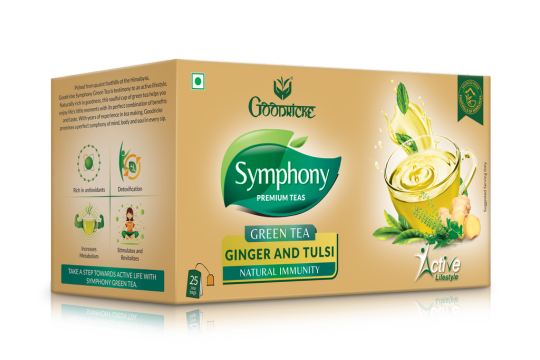
#goodricketea group#black tea#best green tea#green tea online#goodricke tea#organic tea#organic darjeeling green tea#roasted organic darjeeling tea#Symphony Ginger Tulsi Green Tea
0 notes
Text
Traditional Chinese medicine talks about tea, have you been drinking it correctly?
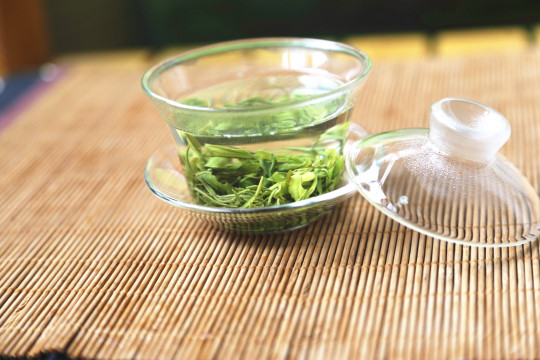
When I was young, I only knew of two types of tea: "big bowl tea" and "Biluochun" tea. Later, I learned about tea because of studying traditional Chinese medicine and discovering that tea is also a type of medicine. For example, the Chuanxiong tea blend is recorded in the "Essentials of Materia Medica": "Tea leaves have a bitter and sweet taste. They enter the Hand and Foot Shaoyin, Taiyin, and Jueyin meridians. They are effective in clearing the heart and lungs, purging the intestines and stomach. When combined with chamomile, it can treat headaches; when combined with ginger, it can relieve water retention and stimulate the bladder and kidney meridians when consumed after drinking alcohol." However, tea is ultimately cold in nature, and since my body constitution is weak and cold in the spleen and stomach, I remember drinking Pu-erh tea once and having to go to the bathroom halfway through, so I rarely drink tea. But one chance encounter changed my perspective.
Recently, I went to visit a small shop near the Wudaoying Hutong next to the Beijing Yonghegong Temple. The shop owner is a good friend of mine who invited me to try Biluochun tea. This is a type of green tea, and at the time it was dinner time, so how could I dare to drink green tea on an empty stomach? So I politely declined. But my friend said, "Just take a sip, I guarantee it won't be too cold." She said that this tea comes from an 80-year-old tea tree growing on a sunny mountain in Dongting Lake. This is the first crop of early spring tea picked by hand and processed with firewood, so it is not like other green teas. Unable to resist her persuasion, I sat down and tasted the Biluochun tea. After drinking a few cups, I was surprised to find that my stomach and intestines felt slightly warm and comfortable, with no signs of diarrhea. I let out a few belches and felt quite comfortable, and even had a slight feeling of fullness. I stayed until 8pm, drinking the tea on an empty stomach, without any discomfort, and even feeling slightly full without hunger. The warm tea entered my stomach and I broke out into a light sweat, feeling very comfortable. Later, my friend gave me some Biluochun tea, and every time I drank it, I felt the same way, so it seems to be no coincidence.
This chance encounter changed my understanding of tea, especially green tea, and reminded me of an elderly person who once said that his father, who was over ninety years old, had been drinking tea his whole life and lived a long and healthy life, as did many other elderly people. At first, I thought it was due to their physical constitution, but now I see it's not entirely the case. Recently, I've been thinking carefully and have had some realizations.
Although the nature of tea is generally cool, ultimately its temperature can be influenced by two factors: first, the growth environment, whether it is in a relatively yin, cold, and humid area or a warm and sunny one. Just like the difference between grapes grown in the north of China and those grown in Xinjiang, or the difference between two types of Chinese medicinal herbs called niuxi: Sichuan niuxi promotes blood circulation, while Henan niuxi nourishes the liver and kidneys. Similarly, ginseng grown in the northeast is warm in nature, while American ginseng is cooler. These differences in nature are due to their different growing environments, including temperature, sunlight, soil, and planting methods.
Second, the processing methods are also important. Most teas need to be withered and then undergo a process called "kill-green," which involves roasting with fire. Traditional Chinese medicine believes that medicinal herbs and raw herbs that have been processed by fire have different cold, hot, warm, or cool properties. For example, raw licorice has a cold and cool nature that can clear away heat and detoxify, while roasted licorice can tonify the spleen and supplement qi. Raw rehmannia has a cool nature that can cool and activate blood, while steamed rehmannia has a slightly warm nature that can nourish the kidneys. Most herbs that have been processed by fire tend to have some warm properties, depending on the specific method of fire processing, which can even vary between using firewood or an oven.
There are many steps involved in tea processing, and many of them involve using fire, either by roasting or steaming. The tea processing method determines the warmth or coolness of the tea. I used to think that fermented teas, such as black tea and Pu-erh tea, were not cool, but that was because I didn't understand the fermentation process of tea. Tea fermentation is usually done by spreading the tea leaves flat and letting them sit at room temperature of around 25 degrees Celsius, so it's different from using fire. Therefore, to sum up, the warmth or coolness of tea depends on the environment and processing method.
In light of this, people with a cold constitution are not necessarily unable to drink green tea, while some fermented teas, such as Pu-erh tea, may not be suitable. Therefore, finding the right tea for oneself and knowing the principle of moderation is the key to health.
Author: Zhang Dong, Chief Physician of the Cardiovascular Department at Xiyuan Hospital, China Academy of Chinese Medical Sciences.
#tea#green tea#chinese tea#white tea#qiandao silver needle tea#spring tea#organic tea#tea polyphenols#black tea#caffeine#Tea leaves#Tea processing#Health preservation#Traditional Chinese medicine#Biluochun#The principle of moderation#Environmental factors#Processing method
5 notes
·
View notes
Text

Kingcha's 100% Natural Tea Online: Savor Nature's Essence in Every Cup
Immerse yourself in the essence of nature with Kingcha's selection of 100% natural teas, free from additives or artificial flavors. From delicate green teas to robust black varieties, each blend is carefully crafted to preserve the integrity of nature's bounty, delivering unmatched freshness and purity to tea lovers worldwide.
1 note
·
View note
Text
7 Organic Spices for Your Kitchen
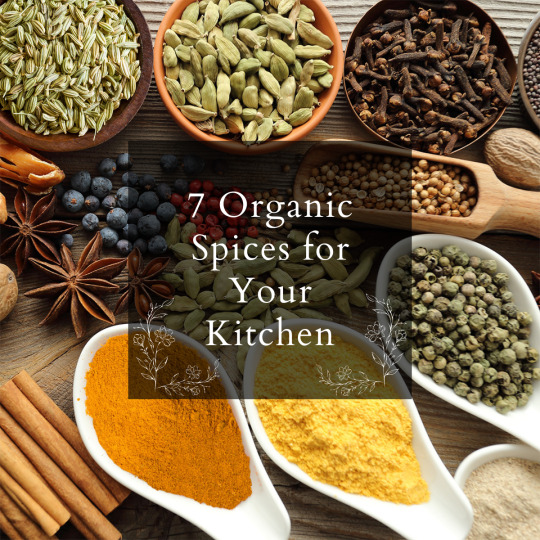
Introduction:
Spices aren't just flavor boosters; they're nature's secret to better health. Ayurveda swears by them for their taste and therapeutic properties. Ready to spice up your meals and wellness game? Let's explore the best organic spices online that'll do wonders for your cooking and your health.
7 Organic Spices with Ayurvedic Benefits:
Cumin: Adds a nutty flavor and aids digestion.
Coriander: Cools down and supports digestion.
Fennel: Relieves bloating and aids digestion.
Turmeric: Boosts immunity and promotes healthy skin.
Cardamom: Freshens breath and aids digestion.
Cinnamon: Regulates blood sugar and aids digestion.
Black Pepper: Improves digestion and nutrient absorption.
Conclusion:
These organic spices aren't just for flavor; they're packed with Ayurvedic benefits too. Whether it's balancing doshas or boosting immunity, these spices have got you covered. Ready to elevate your cooking and your health? Get the best organic spices online today and savor the taste of wellness in every dish!
0 notes